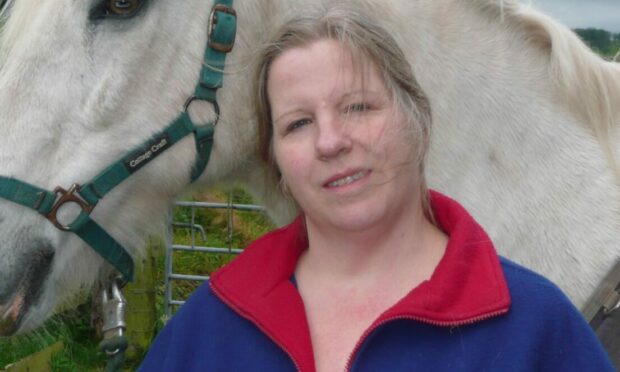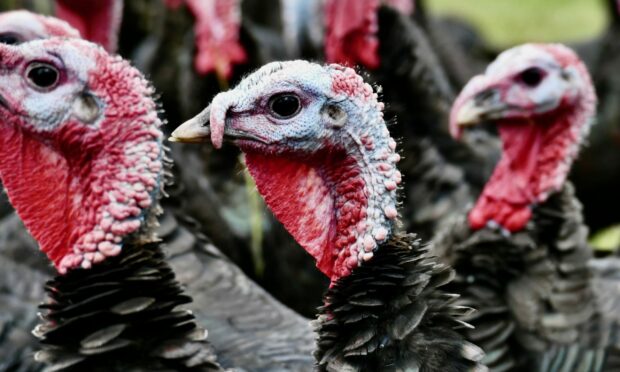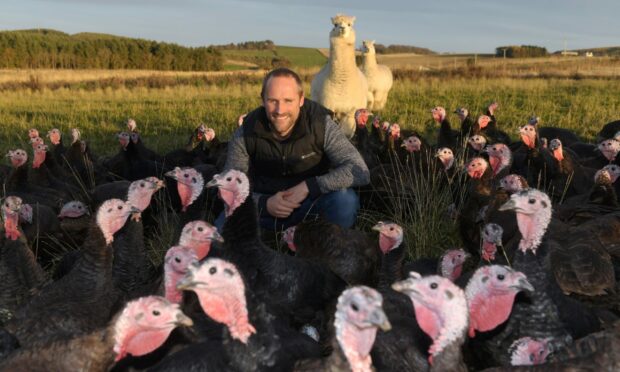Scotland’s chief vet has suggested an Aberdeenshire poultry producer may have made a bird flu outbreak at their site worse by keeping a flock indoors.
The company saw the virus spread across five of their premises after voluntarily moving their birds inside in October to keep the virus at bay.
Chief veterinary officer Sheila Voas said this may have caused the virus to spread more quickly, in a similar way to how coronavirus spreads among humans when they are indoors.
Parallels between bird flu and coronavirus
Speaking at Holyrood’s rural affairs committee, Ms Voas said the Scottish Government has not made it mandatory for all poultry to be moved inside despite the “unprecedented” outbreak as it could make infections worse.
She said: “Five out of the six commercial premises affected were in one ownership group.
“All the birds were housed since early October and the virus found its way from the environment into the house.
“There is evidence that when birds are housed it needs less virus to start and sustain the virus compared to when they are outside.
“There are parallels to Covid – it is safer to be outside at a football match than inside at a dance hall.”
Around 10% of flocks are being voluntarily housed indoors over bird flu fears in Scotland.
Ms Voas added that despite “biosecurity failings”, the Aberdeenshire producer in question genuinely believed they were doing the right thing.
English bird flu unlikely to reach Scotland
So far 224,000 birds have been culled in Scotland in the current outbreak – around 1.5% of the total population.
Ms Voas said one poultry farm went from five dead chickens to over 3,000 in the space of just four days.
As well as the outbreak in Aberdeenshire, the virus was detected in two backyard flocks in Orkney and in a small producers in Lewis.
The disease is mainly spread by wild birds catching it during their migration to Arctic breeding grounds in the summer.
Ms Voas said the problem is worse in England where the virus comes from birds migrating from Siberia and the Baltic States.
In Scotland, the migratory birds tend to come from Iceland, Greenland and Svalbard.
She said birds in England are unlikely to pass the virus to Scottish birds because they will not travel north of the border where it is colder.
However, they may be at risk from birds travelling further south to warmer weather from Iceland and Norway.
Housing birds is not a ‘silver bullet’
Ms Voas now wants to make sure poultry farmers and producers tighten up their biosecurity measures rather than moving their birds indoors as a knee-jerk reaction to the outbreak.
She said good biosecurity can improve virus prevention by a factor of 44, whereas moving birds indoors will only improve things by a factor of two.
Ms said housing birds is not a “silver bullet” as it could have a negative impact on their welfare.
Some of the measures suggested include scaring wild birds away with a dog and making sure there are no ponds in the middle of the birds’ range.
If there is a government-mandated housing of birds, producers can keep their free-range status for 16 weeks.
If they voluntarily choose to house their birds they will lose this status within a few days.
The Scottish Government’s own advice includes restricting access, making sure workers change their clothing and footwear before going into a bird enclosure, cleaning, and disinfecting site vehicles.
Earlier this month a protection and surveillance zone was put in place around Logie Farm near Huntly.
This farm was told by the government to consider housing their birds, or making sure they were kept isolated if housing them was impractical.
Turkey still on the menu for Christmas
During her appearance at the rural affairs committee, Ms Voas also alleviated fears over a shortage of turkeys over Christmas.
This comes after Craig Michie from Barra Bronzes near Inverurie warned the situation could become “catastrophic” and said butchers were contacting him with fears of a turkey shortage.
Ms Voas said despite 1.67 million turkeys being slaughtered in England because of bird flu, around 10m turkeys are needed each year for Christmas.
She said only a few seasonal turkey producers operate in Scotland.
Ms Voas said: “Turkey will be scarcer but I am not worried there won’t be any turkey this Christmas.”



